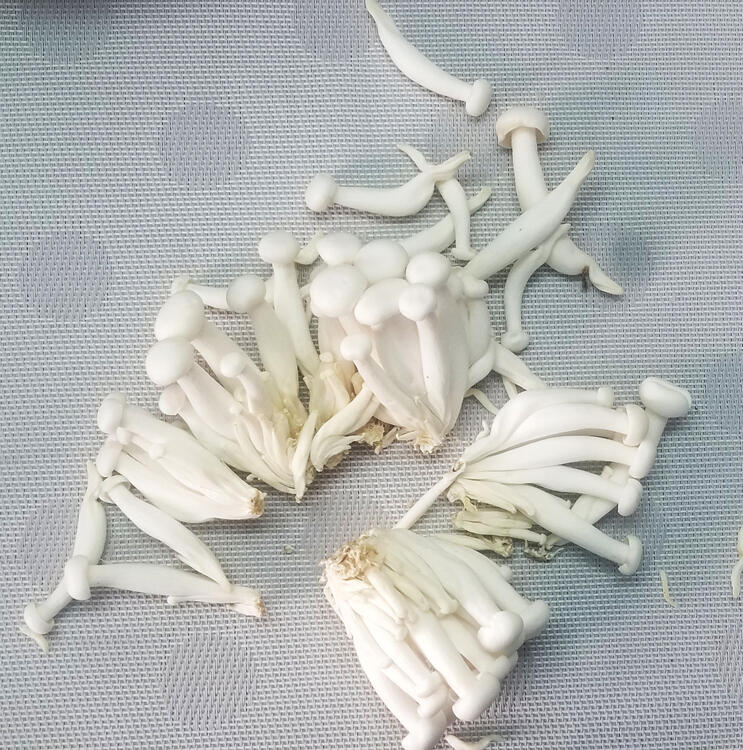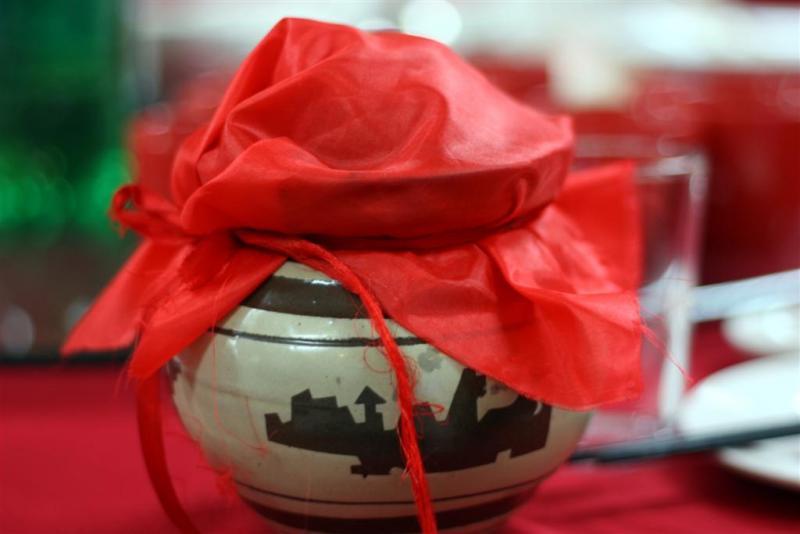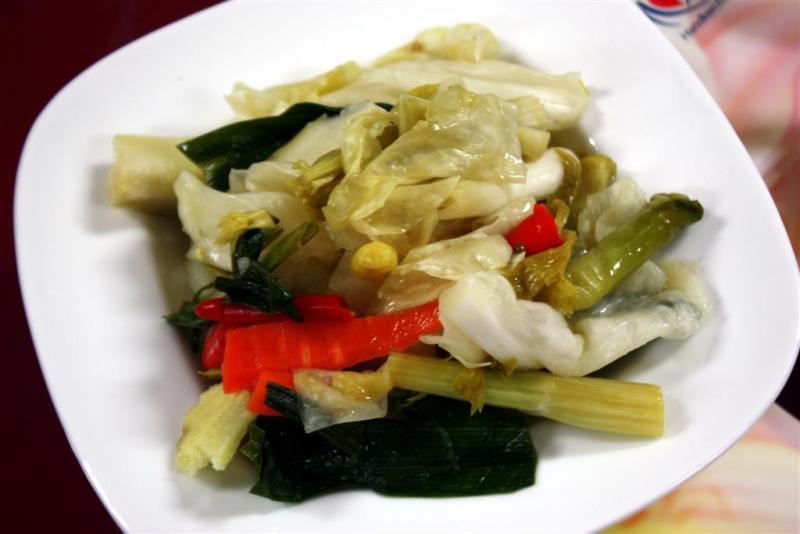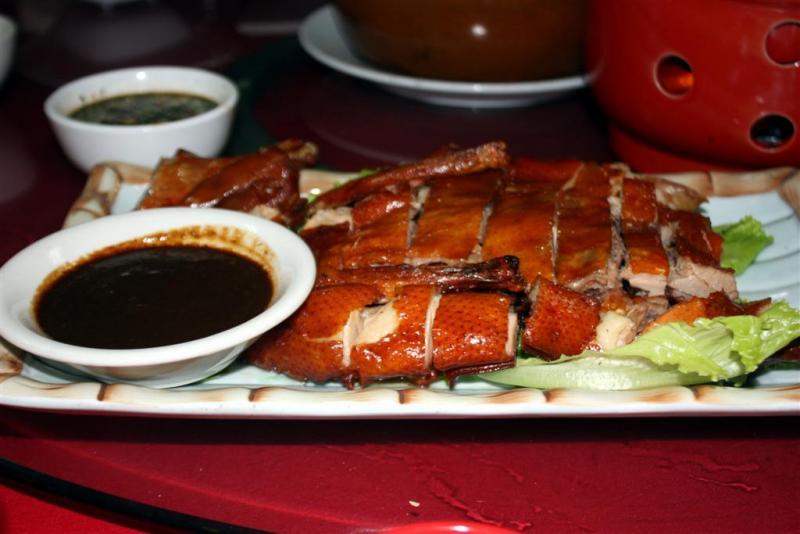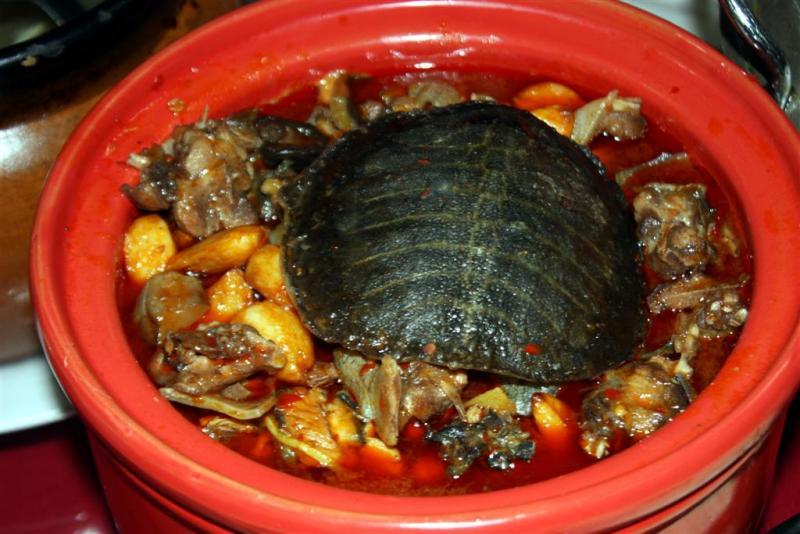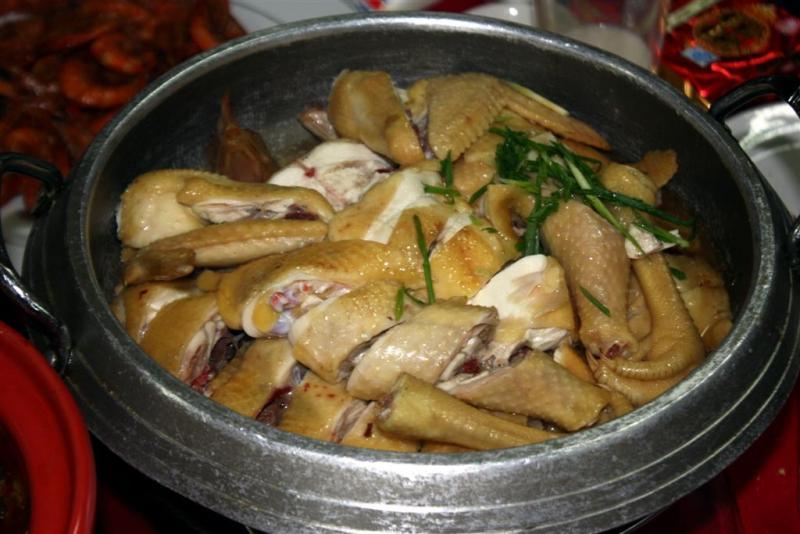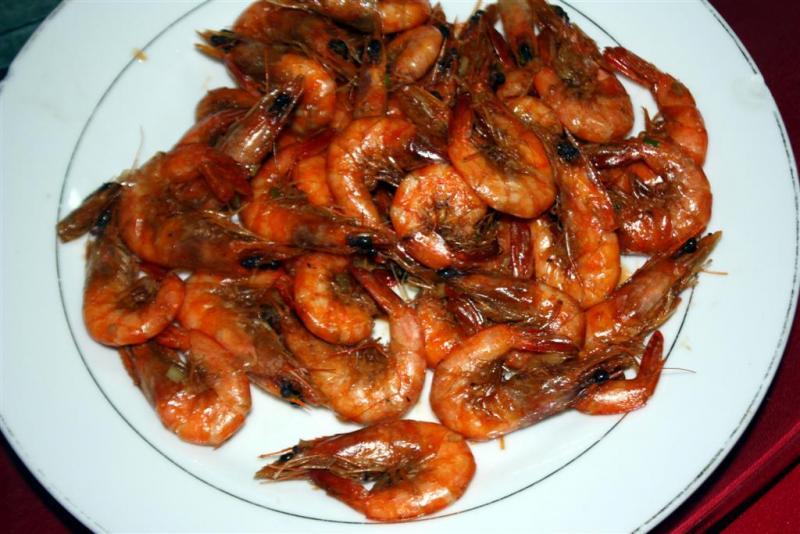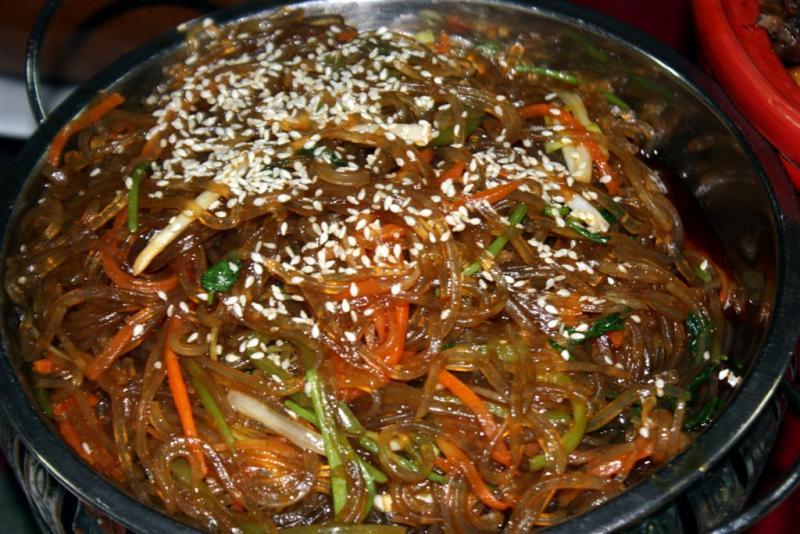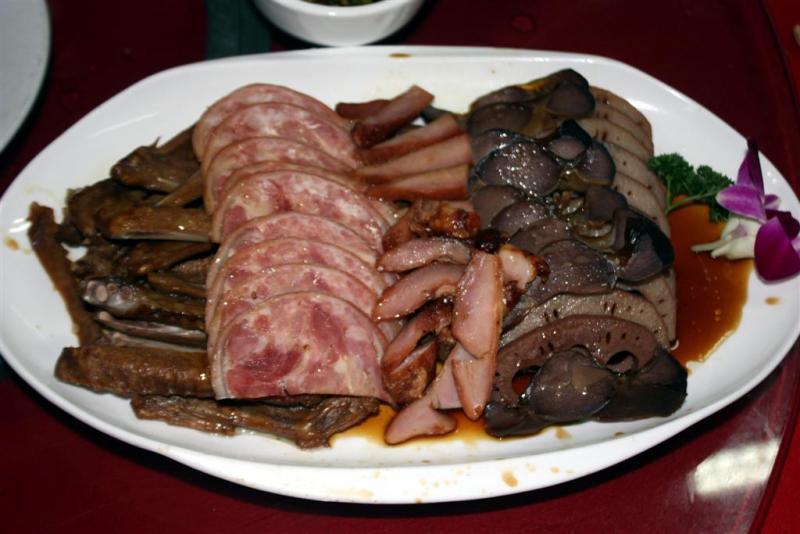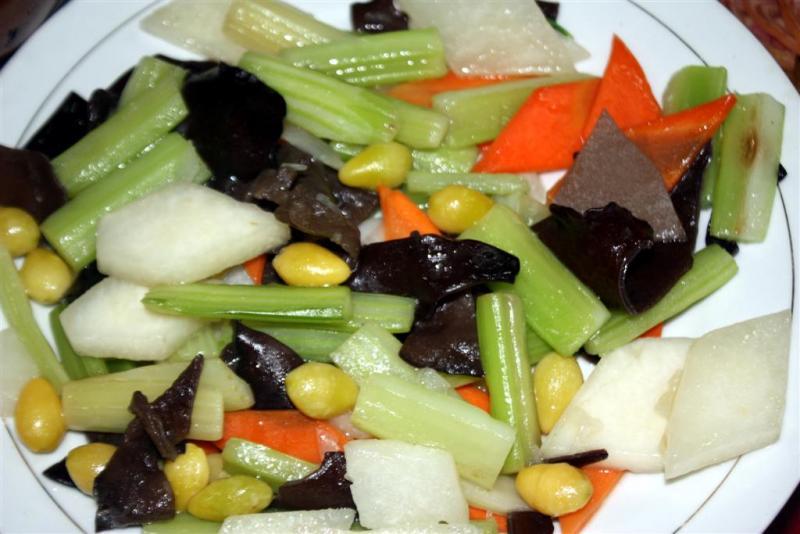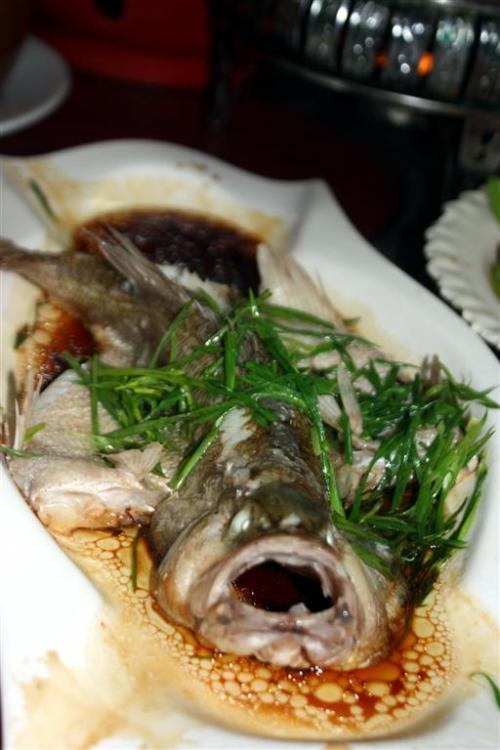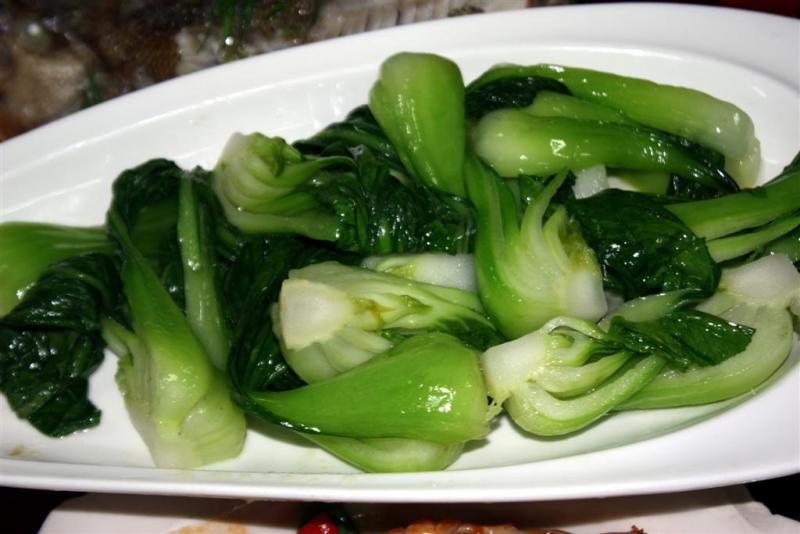Search the Community
Showing results for tags 'Chinese'.
-
We are going to spend a couple of summer weeks in Taiwan. We'll mostly be hanging out with a couple of friends, but at least one of them is very interested in food, and would be happy to schlep where-ever for a special meal or extra good snack. We've got a bit more than a week in Taipei, and the same for the rest of the island. We'd also like suggestions for Taipei, but there's already a topic for that. We're planning on getting to every night market we can. Recommendations for specific markets and items would be awesome. In addition to where to go to eat, we could use suggestions for breakfast. I think we're going to want to grab something in our hotel room many mornings, to save both money and time. Also, coffee. Should I plan on making my own or can I stagger out and drop too much money in a coffee house most mornings? Thanks!
-
Hi everyone! been away from this site for a while now, I just didn't realize its been almost 2 years since I last logged in. Hope everyone is doing well, Auntie Dejah, Auntie Teepee, Uncle Ben Hong, Ah Leung, Liuzhou ( they are great pioneers for knowledge, recipes and and everything in between for the China cooking & baking forum * i bow to thee masters* ). So I moved to a little town called Oxnard in Ventura county, Ca from Chicago....and I'm sad to announce that the asian grocers here have very little selection as far as specific ingredients go, like asian seasonings, herbs, roots, and dried goods, pretty much everything thats of the usual in chinese cooking. L.A. chinatown is only an hour and fifteen away according to the GPS but that lady inside the GPS will also not mention that you will be sitting in traffic for 4 hours one way, so forget that idea lol. The upside though, is they grow almost every concievable fruit and vegetable here, it is also the Strawberry capital of the west coast, apparently I moved into the modern day garden of eden. Acquiring fresh fruits and veggies are not an issue. Last week at the Farmers Market, i saw these beautiful, fat and solid radishes, and I immediately thought of Radish Cake, pan fried with it's carmelized crispy edges dipped in chili oil and soy sauce. I've tried making them before and got discouraged because it turned into a gooey sticky mess instead of a solid block, i used rice flour like the recipe said, i just dont know what i might be doing wrong. Does anybody have any suggestions or solid recipe for Lo bak go that they would like share?
-
While dining at the spectacular Yee Li restauant in Chinatown, I asked the waiter (who we've known for a long time) to recommend a great Dim Sum restaurant. He very highly recommended a restaurant on Mott St., which he called "Tang Lew" - or at least, it sounded like that. I asked him to write it down, which he tried to do in English, and wrote what seems to be "Tang Lew", though it could be "Tang Liew" or "Tang Lieu" or any variation like that. He said that it was a huge place, on Mott St. close to Canal St. (We did drive down Mott St. starting at Canal, but it was raining and most places were closed with their signs off because of how late it was, so we struck out.) Well, I've googled and googled and have come up with nothing. Does anybody here know of this restaurant, what it's really called, where on Mott St. it is? Many thanks for your help !!!!
-
China television is currently showing a series "A Bite of China" on everyday cooking. It's in Chinese, of course. But even if you don't know Chinese the images will have you drooling. Episode one is on YouTube here. To find further episodes search YT for 舌尖上的中国
-
When should I use one as opposed to the other? I've been defaulting to the shaoxing, but I recently picked up a cheap bottle of michiu to try out.
-
Hey, I just stumbled upon what looks like an excellent glossary of types of flour available in China in English, Chinese and pin yin. The link is here, hope it helps! Also, a little off-topic but; I just got an email from Pantry Magic Corporate saying that they've been trying to get the new Beijing store (near Worker's Stadium) to close down since mid-February for 'serious non-compliance'. What's up with that? P.S. I'm not connected to that bread web site or Pantry Magic in any way, for you jaded, snarky-types lurking out there!
-
I've been wanting to make wonton broth like the ones back in Hong Kong. I found some dried stockfish (Dà dì yú - 大地魚), which is what is used in stock if I remember correctly. However, in one of the sealed bag, there was a black, fuzzy caterpillar like bug crawling inside. That freaked me out a little and I just didn't want to get any from that brand, which was the only one available. So, I am thinking maybe I can make my own dried fish. I believe it is flounder I need to start with. I was thinking of just getting one fresh, clean it and then stick it in the dehydrator. Anyone tried that before? Also, in the bag that I didn't purchase, were quite a few star anise. Not sure what they were doing there. Perhaps store together to give the fish flavor. Anyone know?
-
I picked up a dried fish maw from a Chinese store, with the goal of making Chinese fish maw soup. Does anyone have a good recipe or good ideas/advice on how to make soup with fish maw? I searched my Chinese cookbook collection and couldn't find one single mention of this soup. I found a few recipes on the internet, but I'm not thrilled with any of them. Thank you for any replies!
-
The way I've always done fried rice at home is that the rice spends a significant time alone in the pan so that it's a mixture of tender and crisp. Recently, I've been looking at fried rice recipes and most of them have you cook the rice for just 30 seconds to a minute just to warm through including Irene Kuo (Barbara Tropp says 2 - 3 minutes). Which do you do? Do you just reheat the rice or do you try and actually get it fried?
-
I just made some soy sauce chicken last night. I am happy with the result. I am jotting down the ingredients and portions I used to make the "Master Sauce" (Lo Shui). My measurements are approximate. You don't need to follow them to the exact. In fact, alter it and experiment with it to create your own. The "Master Sauce" - the initial pot: - 2 cups of dark soy sauce - 1 cup of light soy sauce - 1 cup of sweet soy sauce (kecap manis) - 3 cups of water - 1/2 cup of Shao Xing rice wine - 1 small whole onion, peeled and wedged - 4 to 5 cloves of garlic, peeled and smashed - 1 green onion, cut in about 1-inch pieces - 3 to 4 inches length of fresh ginger, cut into thick slices For the spices: - 3 teaspoons of fennel seeds - 3 teaspoons of cloves - 3 to 4 whole cardamom - chop them into big pieces or crack them - 20 star anises, break them up - 2 sticks of cinnamon, hand-break them into small shreds - 3 teaspoons of Sichuan peppercorn - 2 to 3 pieces of dried tangerine peels (chan pei) - About 3 big cubes (each about 2-inch x 2-inch x 1-inch) of rock sugar (Note: you may also add cummin seeds, white or black peppercorns if you like.) (Note 2: If you want to take time to cook, use whole spices. Don't use the powder form. The result from cooking with whole spices is so much better.) Pour all the ingredients into a medium-size pot. Bring the sauce to a boil. Do an initial boiling for about 5 minutes. Then reduce the heat to a simmer. Let it bubble for about 3 hours. There... you have a pot of "Master Sauce" freshly made. You may use the sauce for flavoring all Cantonese braised dishes (e.g. beef brisket, abalone, pork belly, etc.)... or use it to cook soy sauce chicken. Or use it to cook tea eggs. For home-cooked soy sauce chicken... I only do split chicken breast with ribs and not a whole chicken. You may cook a small whole chicken with it. (I am not sure if the above portion is enough to cover the chicken, so adjust if needed). Bring the sauce to a high-heat boil. Add the chicken/breasts/thighs. Boil for about 13 minutes or so. Turn off the heat. Let the chicken/breasts/thighs continue to cook in the sauce for about 15 to 20 more minutes at least. Remove, chop up and serve with some braising liquid. This pot of "Master Sauce" is like the mother dough of your sour dough bread. Filter out all the spices and residues. Save the liquid only in the freezer. (It won't even freeze up) Next time you make another round of soy sauce chicken: add more ingredients of everything. The soy sauces - probably use about one quarter of the portion suggested above. Spices - about the same. Rock sugar - only 1 cube.
-
An eG member recently asked me by private message about mushrooms in China, so I thought I'd share some information here. This is what is available in the markets and supermarkets in the winter months - i.e. now. I'll update as the year goes by. FRESH FUNGI December sees the arrival of what most westerners deem to be the standard mushroom – the button mushroom (小蘑菇 xiǎo mó gū). Unlike in the west where they are available year round, here they only appear when in season, which is now. The season is relatively short, so I get stuck in. The standard mushroom for the locals is the one known in the west by its Japanese name, shiitake. They are available year round in the dried form, but for much of the year as fresh mushrooms. Known in Chinese as 香菇 (xiāng gū), which literally means “tasty mushroom”, these meaty babies are used in many dishes ranging from stir fries to hot pots. Second most common are the many varieties of oyster mushroom. The name comes from the majority of the species’ supposed resemblance to oysters, but as we are about to see the resemblance ain’t necessarily so. The picture above is of the common oyster mushroom, but the local shops aren’t common, so they have a couple of other similar but different varieties. Pleurotus geesteranus, 秀珍菇 (xiù zhēn gū) (below) are a particularly delicate version of the oyster mushroom family and usually used in soups and hot pots. 凤尾菇 (fèng wěi gū), literally “Phoenix tail mushroom”, is a more robust, meaty variety which is more suitable for stir frying. Another member of the pleurotus family bears little resemblance to its cousins and even less to an oyster. This is pleurotus eryngii, known variously as king oyster mushroom, king trumpet mushroom or French horn mushroom or, in Chinese 杏鲍菇 (xìng bào gū). It is considerably larger and has little flavour or aroma when raw. When cooked, it develops typical mushroom flavours. This is one for longer cooking in hot pots or stews. One of my favourites, certainly for appearance are the clusters of shimeji mushrooms. Sometimes known in English as “brown beech mushrooms’ and in Chinese as 真姬菇 zhēn jī gū or 玉皇菇 yù huáng gū, these mushrooms should not be eaten raw as they have an unpleasantly bitter taste. This, however, largely disappears when they are cooked. They are used in stir fries and with seafood. Also, they can be used in soups and stews. When cooked alone, shimeji mushrooms can be sautéed whole, including the stem or stalk. There is also a white variety which is sometimes called 白玉 菇 bái yù gū. Next up we have the needle mushrooms. Known in Japanese as enoki, these are tiny headed, long stemmed mushrooms which come in two varieties – gold (金针菇 jīn zhēn gū) and silver (银针菇 yín zhēn gū)). They are very delicate, both in appearance and taste, and are usually added to hot pots. Then we have these fellows – tea tree mushrooms (茶树菇 chá shù gū). These I like. They take a bit of cooking as the stems are quite tough, so they are mainly used in stews and soups. But their meaty texture and distinct taste is excellent. These are also available dried. Then there are the delightfully named 鸡腿菇 jī tuǐ gū or “chicken leg mushrooms”. These are known in English as "shaggy ink caps". Only the very young, still white mushrooms are eaten, as mature specimens have a tendency to auto-deliquesce very rapidly, turning to black ‘ink’, hence the English name. Not in season now, but while I’m here, let me mention a couple of other mushrooms often found in the supermarkets. First, straw mushrooms (草菇 cǎo gū). Usually only found canned in western countries, they are available here fresh in the summer months. These are another favourite – usually braised with soy sauce – delicious! When out of season, they are also available canned here. Then there are the curiously named Pig Stomach Mushrooms (猪肚菇 zhū dù gū, Infundibulicybe gibba. These are another favourite. They make a lovely mushroom omelette. Also, a summer find. And finally, not a mushroom, but certainly a fungus and available fresh is the wood ear (木耳 mù ěr). It tastes of almost nothing, but is prized in Chinese cuisine for its crunchy texture. More usually sold dried, it is available fresh in the supermarkets now. Please note that where I have given Chinese names, these are the names most commonly used around this part of China, but many variations do exist. Coming up next - the dried varieties available.
-
I got this recipe http://www.saveur.com/article/Kitchen/saveur-100-tea-eggs from Saveur for those stained glass-looking eggs. Clearly one cannot boil 5 eggs in a half cup of soy, so this recipe is a bummer without even trying it. But every other recipe I can google up fails when I try it. At best I get a faintly stained egg after a couple days in the tea/soy/spice fluid. Letting it go a week is no better. So does anyone know the trick?
-
Which region would the dish of steamed pork ribs in lotus leaf come from? I'm trying to identify the regionality of the dish to try to see where its from so as to know if you're supposed to use soybean paste or broadbean paste to make it. I've found two recipes that seem to be about making the dish- steamed pork ribs covered in rice powder. But the first recipe used broadbean paste while the latter used soybean paste. http://www.holyshitake.com/archives/2004/11/steamed_ribs_in_rice_powder_with_sweet_potato.html http://www.nicolemones.com/pork-ribs-in-lotus-leaf.html Anybody else have any more tips or recipes on how to make this dish?
-
For the last several years Cindy's* job has been to look after me. She takes care of my residence papers, my health insurance, my travel, my housing and associated repairs. She makes sure that I am supplied with sufficient cold beer at official banquets. And she does it all with terrific efficiency and great humour. This weekend she held her wedding banquet. Unlike in the west, this isn't held immediately after the marriage is formalised. In fact, she was legally married months ago. But the banquet is the symbolic, public declaration and not the soul-less civil servant stamping of papers that the legal part entails. So tonight, along with a few hundred other people, I rolled up to a local hotel at the appointed time. In my pocket was my 'hong bao' or red envelope in which I had deposited a suitable cash gift. That is the Chinese wedding gift protocol. You don't get 12 pop-up toasters here. I handed it over, then settled down, at a table with colleagues, to a 17 or 18 course dinner. Before we started, I spotted this red bedecked jar. Shaking, poking and sniffing revealed nothing. A few minutes later, a waitress turned up and opened and emptied the jar into a serving dish. Spicy pickled vegetables. Very vinegary, very hot, and very addictive. Allegedly pickled on the premises, this was just to amuse us as we waited for the real stuff to arrive. Then the serious stuff arrived. When I said 17 courses, I really meant 17 dishes. Chinese cuisine doesn't really do courses. Every thing is served at roughly the same time. But we had: Quail soup which I neglected to photograph. Roast duck Braised turtle Sticky rice with beef (the beef is lurking underneath) Steamed chicken Spicy, crispy shell-on prawns. Steamed pork belly slices with sliced taro Spicy squid Noodles Chinese Charcuterie (including ducks jaws (left) and duck hearts (right)) Mixed vegetables Fish Cakes Fertility soup! This allegedly increases your fertility and ensures the first born (in China, only born) is a son. Why they are serving to me is anyone's guess. It would make more sense for the happy couple to drink the lot. Greenery Jiaozi There was a final serving of quartered oranges, but I guess you have seen pictures of oranges before. The happy couple. I wish them well. *Cindy is the English name she has adopted. Her Chinese name is more than usually difficult to pronounce. Many Chinese friends consider it a real tongue-twister.
-
I'm trying to plan a dinner menu and a lot of recipes require the use of egg whites while on the other hand there are very few which require the use of egg yolks. Normally I would just use the yolks in a custard or lemon curd but I was hoping to maybe incorporate the yolks somewhere into the menu this time. I know they could be added to fried rice and I've seen one recipe where yolks are used in a dessert soup, but beyond that I'm sort of at a loss. What do those huge Cantonese restaurants who use gallons of egg whites every day in soups and marinades do with all the yolks?
-
Hi - I got this as a present: But as you can see everything is in Chinese. I've already tried one setting with wild rice and the results have been very nice, but as you can imagine I am flying blind. Could anybody with Mandarin knowledge help me out, I am mostly interested in this: And maybe (?) this: Thanks in advance!
-
Luffa is going on sale this weekend at my local chinese chain market. 3lbs for a dollar. Anyone have any ideas of things or experience with what to do with it?
-
A Mr. Wang, co-owner of Legend, a place written up in the NYT... http://www.nytimes.com/2011/07/27/dining/reviews/legend-bar-and-restaurant-nyc-restaurant-review.html ...says, in the last paragraph, that Chinese food is more difficult to cook than French or Japanese as it's not sauce-based. Each time the chef cooks a dish he/she has to make it from scratch in the wok. I'd like to hear some eGulleters weigh in on this?
-
Recently a store started carrying pork stomach in the freezer case, and it reminded me of a girl I knew in college who was from China. We would end up eating lunch in the same place around the same time most days. She always brought her own food from home and it always looked and smelled awesome. I started to ask her about what she was eating and she started to share and bring me samples of her cooking. She was an excellent cook. One dish she made was a pork stomach dish that was savory and spicy and it was my favorite dish she made. I never was able to learn a lot about how she made stuff because she was very shy about her English skills which created a bit of a language barrier. It's been 15 years since I had it, and I would like to try to make it. From what I remember talking to her was that it was a recipe she learned from her grandmother. She simmered the stomach until it was tender in a "seasoned broth". She would cool and slice it and then crisp it in a pan. The sauce is what I need help with, it was a spicy brown sauce, but I have no idea what was in it exactly and while now I have a better grasp on different seasonings I have never been able to recreate it. The veggies I remember that went with it were bamboo shoots, onion, carrot, fresh button mushrooms. I know my description is pretty vague, but is anyone familiar with a dish like this?
-
Having some friends come around for dinner on Sunday and I somehow agreed to make Chinese dishes. Before dinner, we'll be spending time out of the house. I want to have some dishes ready to heat up and keep the cooking to minimal while friends are over. I'm thinking 3 dishes: 2 meat and a veg. She'll be bringing a chicken dish over. What are some dishes that are good to make ahead? One dish I can think of is lion's head meatballs. Anything else? There will be teenagers who aren't adventurous eaters. So, nothing on the bone, nothing to fatty (pork belly, etc.), no seafood, no offal. They also don't care for veg so I'm making a separate veg dish for the adults. Another thing is, I want to stay away from stir-fry dishes (other than the veg dish). My wok isn't quite seasoned yet and everything tends to stick, no matter how much oil or how hot I heat the oil up. Don't quite want to have food stuck to my wok in front of guests. Help?
-
Interesting interview by "The Browser" with Fuchsia Dunlop in which she gives her top 5 Chinese food books. Classic Food of China - Yan-Kit So Food in Chinese Culture - KC Chang The Food of China - EN Anderson China to Chinatown - JAG Roberts The Gourmet - Lu Wenfu Apart from her own books, I'm not sure what I'd add. The interview is at: http://thebrowser.com/interviews/fuschia-dunlop-on-chinese-food?page=1
-
Jing and Sebastian at jingteashop.com recommend leaving a small amount of tea in your gaiwan as a "root" for the next infusion when brewing Chinese green tea. Anyone else do this? I have tried it, but not done a side-by-side comparison, and think there may be a mild intensification of flavor. It certainly does not seem to cause any bitterness. How about leaving a root in a glass when brewing "gradpa style"? Thoughts? Experiences?
-
I'm thinking of tackling this this week, but I need some pointers or additional information. The meat: is that just red cooked beef or is it something else. From my long ago visit to Sam Woo BBQ, my local sui mei place, I think they listed something as 'soy sauce beef' I'm guessing it's like soy sauce chicken? Also I'm thinking of breaking with tradition with char sui or thit nuong since I have some suitable pork in the freezer I want to use and to try those recipes. The bread: Not sure what type they are using. It seems to have more structure then a tortilla, so I'm thinking it's something like a cong you bing with out the onions or something like a shaobing, but on a griddle. Any thoughts? Reference http://christine-wei.tumblr.com/post/1423939474/taipei-main-station-potsticker-gyoza and at http://thetincook.blogspot.com/2011/04/niu-rou-juan-bing.html NB Reposted after fixing image copywrite problem- TTC
-
There's an ersatz version of "strange flavored"/Kung Pao chicken that I've tweaked over the years after stealing it from Charmaine Solomon's terrific Complete Asian Cookbook. Her recipe, like so many, includes a corn starch/water slurry, and I dutifully prepared it yesterday afternoon along with the rest of the prepped vegetables, meat, and aromatics. So I went through the steps, deep-frying the chicken, then cooking the long green beans through, and so on. When I finally got to the stage where I add the stock/chinkiang/soy/sugar mixture, I blasted the wok cooker and very quickly reduced the liquids to a thick sauce. I dumped it quickly into the bowl and rushed inside. It was delicious -- the best version I've ever made, if I do say so myself. And as I was enjoying it, I realized that I hadn't used the corn starch slurry. Thanks to the brutal heat of the propane, there was no need for it. This has me wondering about the use of corn starch in either Chinese restaurants or home kitchens. Is it simply an accommodation for the lack of heat? I'll be experimenting with avoiding it in the future, given the success of this attempt. In the leftovers in particular, the absence of that starchy goop was notable and very welcome indeed.
-
The GF and I are going to Dim Sum tomorrow, and in the course of talking about it she mentioned that she loves chicken feet and the sauce that they often come with. I'd like to try making them for her as I can easily get the feet and any ingredients, and it would be neat to try making something so different. So, any suggestions on how to cook the feet and ideas for a sauce? Thanks!










